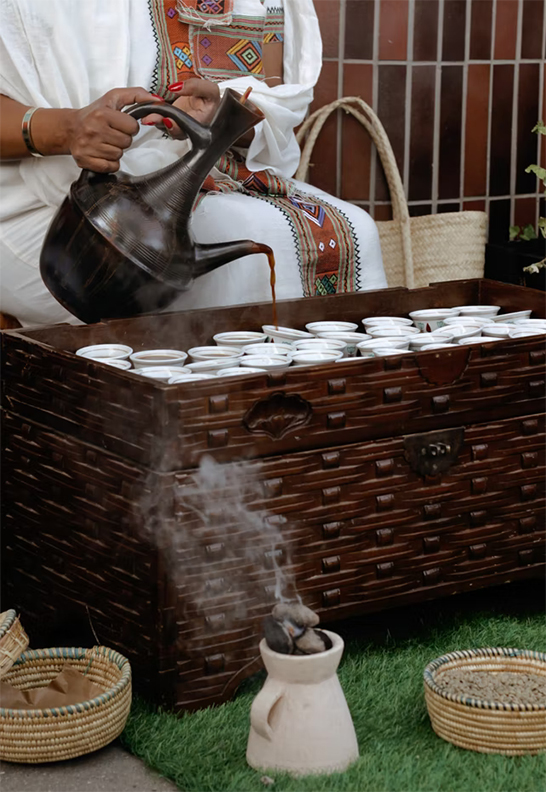What are the main varieties of Ethiopian Arabica?

A journey to the four corners of Ethiopia, through its unique varieties of coffee.
As all coffee lovers know, Ethiopia is the birthplace of coffee, the place where coffee trees are native plants, but also the place where coffee cultivation began hundreds of years ago. Ethiopia is consistently among the top 10 coffee producing countries in the world, with coffee exports a mainstay of its economy and many of the local Arabica varieties being favorite choices for dozens of coffee lovers around the world.
In Ethiopia, Arabica coffee is grown exclusively, but it belongs to different sub-varieties, each of which has its own organoleptic characteristics. Since the Ethiopian varieties of coffee are classified according to the region of origin (with the corresponding names being international trademarks), we take a "walk" in the country, getting to know its unique coffee!
What are the main varieties of Ethiopian Arabica?
 Sidamo: In all probability, the highlands of Sidamo are the first area on the entire planet where coffee was grown. The morphology of the area, in which we find cultivable plateaus at an altitude of 1500 - 2200 meters, is ideal for coffee cultivation, as is its microclimate. This has resulted in Sidamo being one of Ethiopia's largest coffee producing regions, with beans sought after on the global market and known for their quality. Sidamo's coffee is fruity, with a dominant sense of citrus flavor and lively acidity.
Sidamo: In all probability, the highlands of Sidamo are the first area on the entire planet where coffee was grown. The morphology of the area, in which we find cultivable plateaus at an altitude of 1500 - 2200 meters, is ideal for coffee cultivation, as is its microclimate. This has resulted in Sidamo being one of Ethiopia's largest coffee producing regions, with beans sought after on the global market and known for their quality. Sidamo's coffee is fruity, with a dominant sense of citrus flavor and lively acidity.
Yirgacheffe: Although until a few years ago it was included in Sidamo's coffees, the special and unique character of the beans from the plantations around the town of Yirgacheffe, at 2000 meters, led to the distinct branding of the region and the separate categorization of its coffees. The floral aromas dominate, but the chocolate notes and lively acidity create a unique effect, highly sought after and much loved by lovers of espresso and filter coffee.
Proposed Coffee: Ingagi Ethiopia Yirgacheffe Gedeb G1 250g
Harar: The region of the same name is located in the East of the country and is one of the first Ethiopian provinces to grow coffee. The taste of Harar is unique, with many aficionados claiming that it resembles a dry red wine, while the floral aromas, fruity character and sharp acidity play a leading role here as well. Traditionally, the collection and processing of Harar is done manually, by skilled artisans and with know-how that is passed down from generation to generation. Locals also highly value the skins of haar cherries, with which they make a tea-like beverage, haser-qahwa.
Proposed Coffee: Ingagi Ethiopia Harar Gr.1 Longberry 250g
Genika: A rare Arabica variety from the Ethiopian South grown exclusively in the Bench Seko area.The beans are small in size, but the flavor profile is extremely complex, with hints of spice, wine, flowers and chocolate. A particularly tasty and aromatic coffee variety, which has not yet found the place it deserves in the global coffee market.
Gesha: A "legendary" variety of coffee, which attracted the attention of the public in recent years and emerged as one of the "totems" of the Third Wave of Coffee. It comes from the forest of Gesha, where wild coffee trees still grow, and was only isolated in the first half of the 20th century. Gesha coffee trees were sent to various coffee producing areas, and the variety found ideal terroir in Central America, producing excellent quality coffees, culminating in Panama – Panamanian Gesha is one of the most expensive and delicatessen coffees one can drink right now.
Πρόταση Αγοράς: Ingagi Panama Gesha Carmen Estate 100g
Whichever Ethiopian coffee one chooses for their espresso, what is certain is that the homeland of coffee hides surprises – and of course, unique aromas!








